Quick Setup
Before using the projector, make sure you read the safety instructions in the
online User’s Guide.
Connect the projector
Choose from the following connections. See the sections below or the online
User's Guide for details.
Computer
VGA cable
USB cable
HDMI cable
USB port
Connect the square end of a USB cable to the projector’s USB TypeB
(square) port. Connect the flat end of the cable to any USB port on your
computer.
Windows
®
2000 SP4 or later: After turning on the projector, follow
the on-screen instructions to install the EPSON
®
USB Display software
(EMP_UDSE.EXE; only on first connection).
Note: If the software screen does not display automatically, open My
Computer or Computer, then double-click EPSON_PJ_UD.
Mac OS X 10.5.1 or higher: After turning on the projector, the setup folder
for USB Display appears in the Finder. Double-click USB Display Installer and
follow the on-screen instructions to install the EPSON USB Display software
(only on first connection).
Monitor port
Connect one end of a VGA cable to the projector’s Computer port, and the
other end to your computer’s monitor port. If you are using a laptop,
switch it to external display (see “Troubleshooting”). You can also connect an
audio cable.
HDMI port
Connect one end of an HDMI cable to the projector’s HDMI port and the other
end to an HDMI port on your computer.
Note: To connect a Mac that includes only a Mini DisplayPort or Mini-DVI port
for video output, you need to obtain an adapter that allows you to connect to
the projector’s HDMI port. Contact Apple for compatible adapter options. Older
Mac computers (2009 and earlier) may not support audio through the HDMI
port.
Video device
Connect up to 3 video devices and use the Source Search button on the
projector or remote control to switch between them.
RCA video cable (composite video)
Component video to VGA cable
Audio cable
HDMI cable
Camera, USB device, or EPSON Document Camera
DC-06
Connect a digital camera, USB flash drive, USB storage device, or EPSON
document camera DC-06 to the projector’s USB TypeA (flat) port.
If you connect a digital camera, USB flash drive, or USB storage device, you can
use the projector’s Slideshow feature to project images. See the online User’s
Guide for details.
Turn on your equipment
1
Turn on your computer or video source.
2
Plug in the projector. The power light on the projector turns orange.
3
Open the A/V Mute slide all the way.
4
Press the power button on the projector or remote control. The
projector beeps, the power light flashes green, and then stays on.
Note: To shut down the projector, press the power button twice, then
unplug it. You don’t have to wait for the projector to cool down.
5
The default language of the menu system is English. To select another
language, press the Menu button on the remote control. Select
Extended and press . Select Language and press . Select your
language and press . Press the Menu button to exit the menu system.
Adjust the image
1
If you don’t see an image, press the Source Search button on the
projector or the remote control to select the image source.
Note: If you still see a blank screen or have other display problems, see
the troubleshooting tips on the back of this sheet.
2
To raise the image, press the foot release button and lift the front of the
projector. Release the button to lock the foot in position.
3
PowerLite 1776W: Press the Focus buttons to sharpen the image.
PowerLite 1761W/1771W: Rotate the focus ring to sharpen the image.
PowerLite
1776W
PowerLite
1761W/1771W
4
Turn the zoom ring to reduce or enlarge the image.
PowerLite
1776W
PowerLite
1761W/1771W
5
Your projector automatically adjusts images that look like or ,
but if necessary you can press the or buttons on the projector to
correct it.
Using the remote control
Make sure the batteries are installed as shown (two AA batteries).
Choose which source
to display
Turn projector on
and off
Access projector
menus
Turn off projector
display
Get solutions to
common problems
Navigate projector
menus
For more information on using the remote control, see the online User’s Guide.
Project wirelessly
Follow the steps here to connect the projector wirelessly over an 802.11n,
802.11g, or 802.11b wireless network. Your computer must have a wireless
card or built-in wireless interface, and be running Windows 7, Windows Vista
®
,
Windows XP Professional x64, Windows XP, or Windows 2000, or
Mac OS X 10.4 to 10.7.
1
Turn off the projector and unplug the power cord.
2
To install the wireless LAN module, turn the projector over and remove
the screw securing the wireless LAN module cover.
3
Remove the wireless LAN module cover.
4
Insert the wireless LAN module into the port.
5
Replace the cover and secure it using the screw.
6
Plug in and turn on the projector.
7
To configure your projector for your wireless network, do one of the
following:
•
If you’re using the optional Quick Wireless Connection USB key,
insert it into the projector’s USB TypeA port, wait for the displayed
message, remove the key, and connect it to a USB port on your
computer. Follow the on-screen instructions to install the driver, then
run your presentation. For details, see the online User’s Guide.
•
If you’re not using the key, continue with the following steps.
PowerLite
®
1761W/1771W/1776W
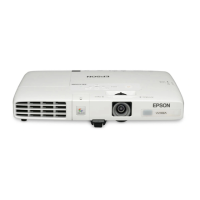
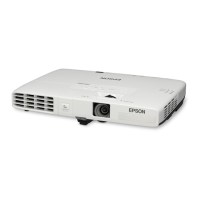
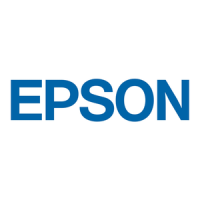



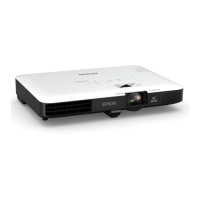
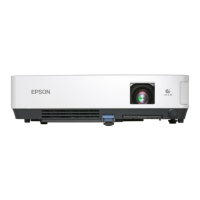



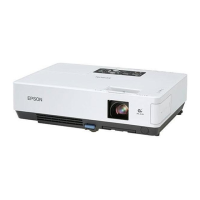
